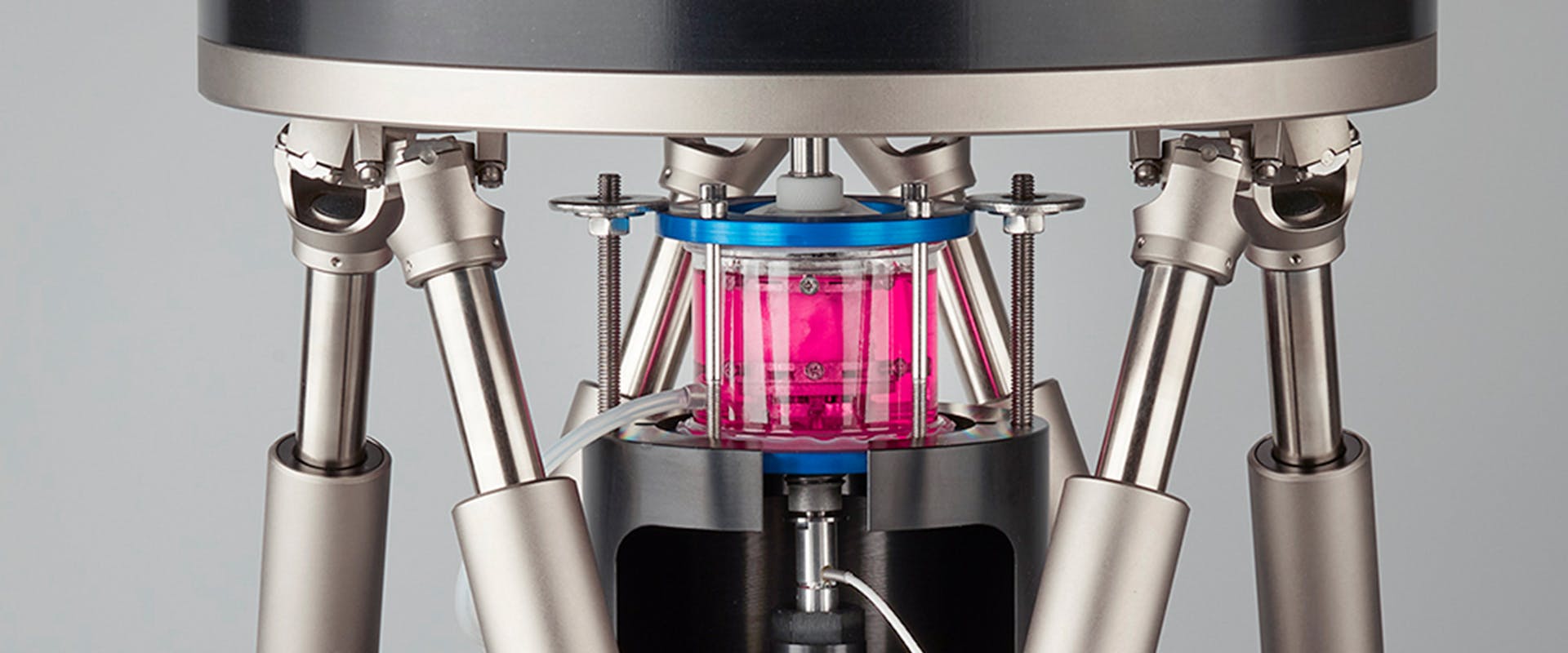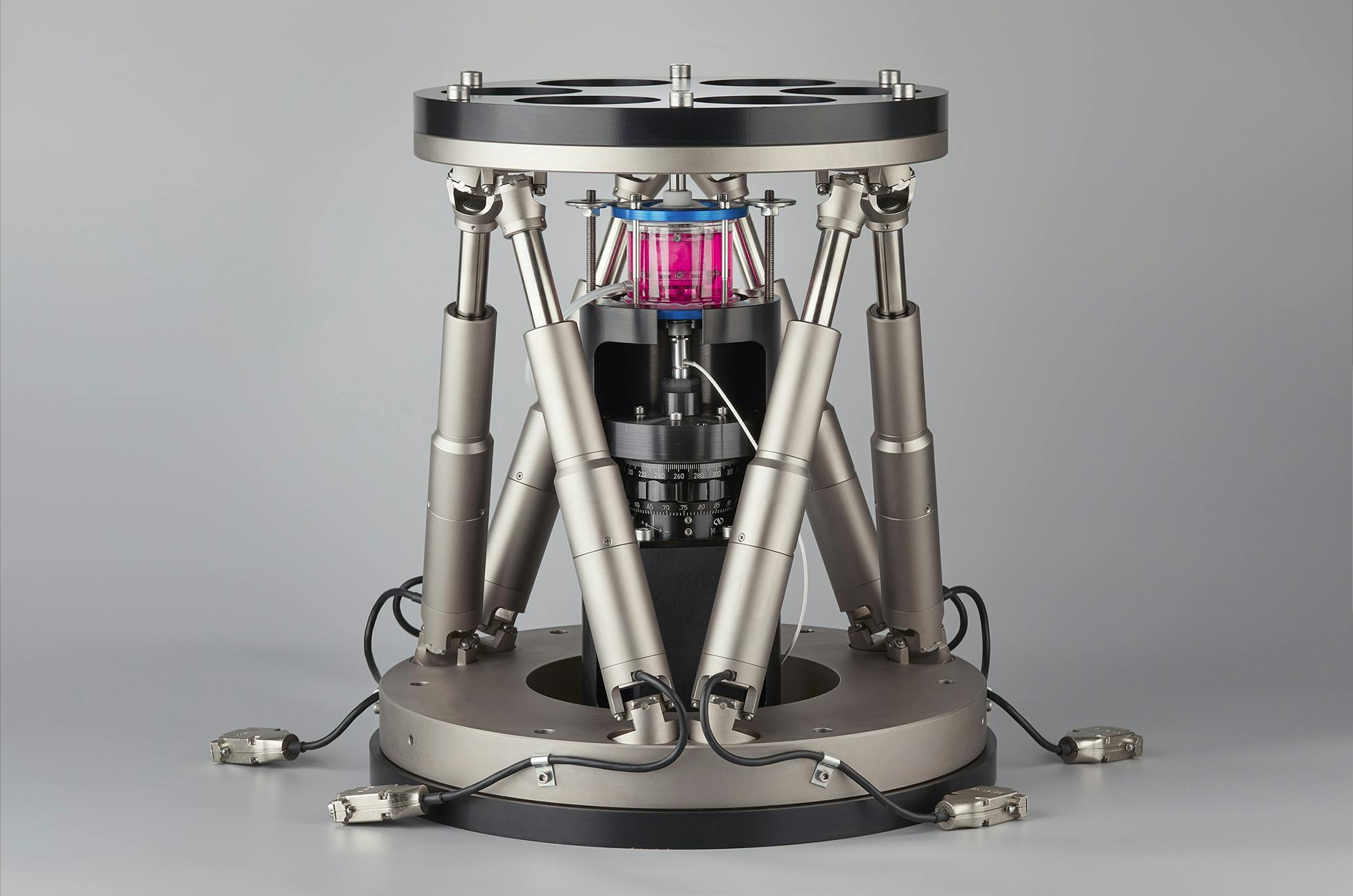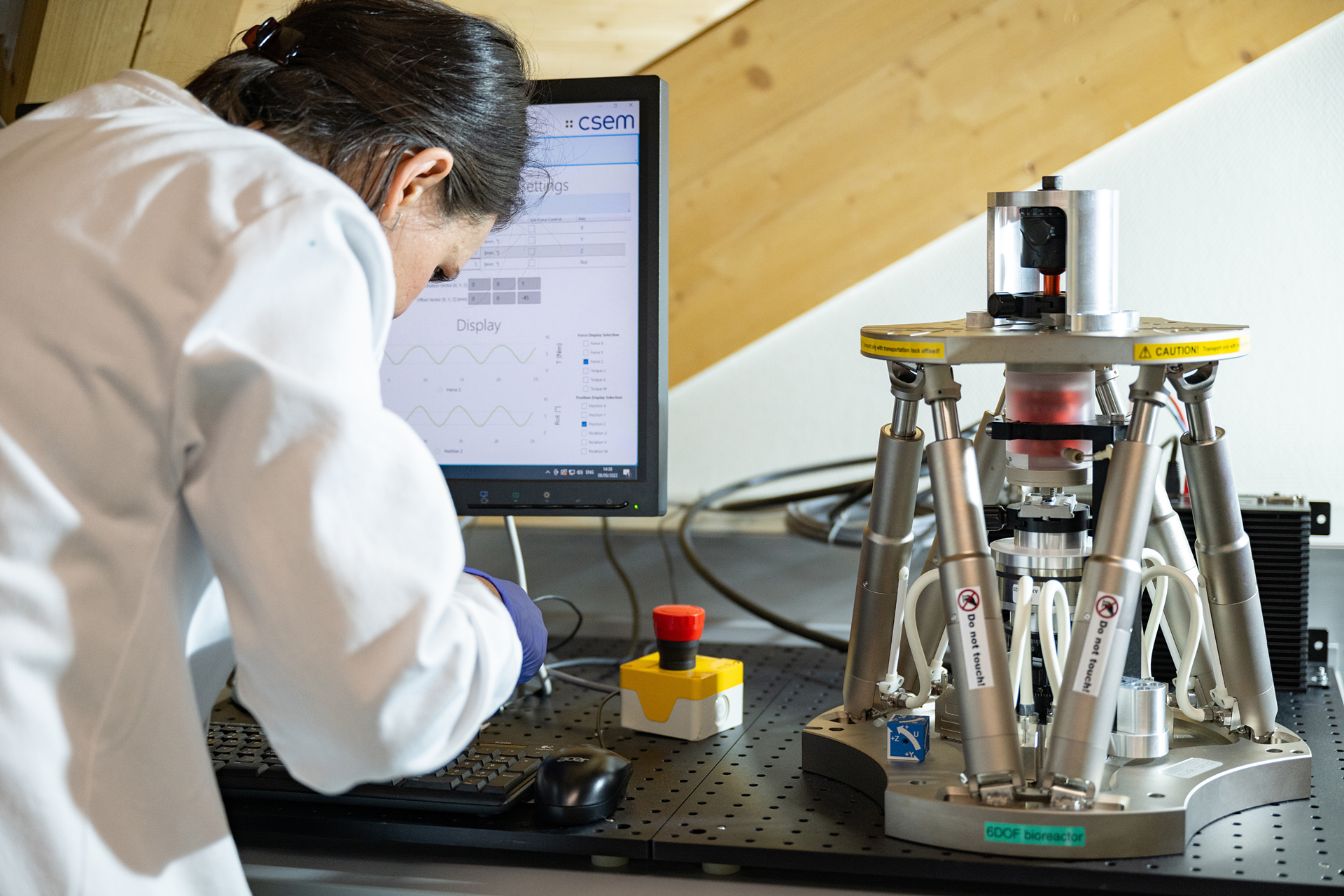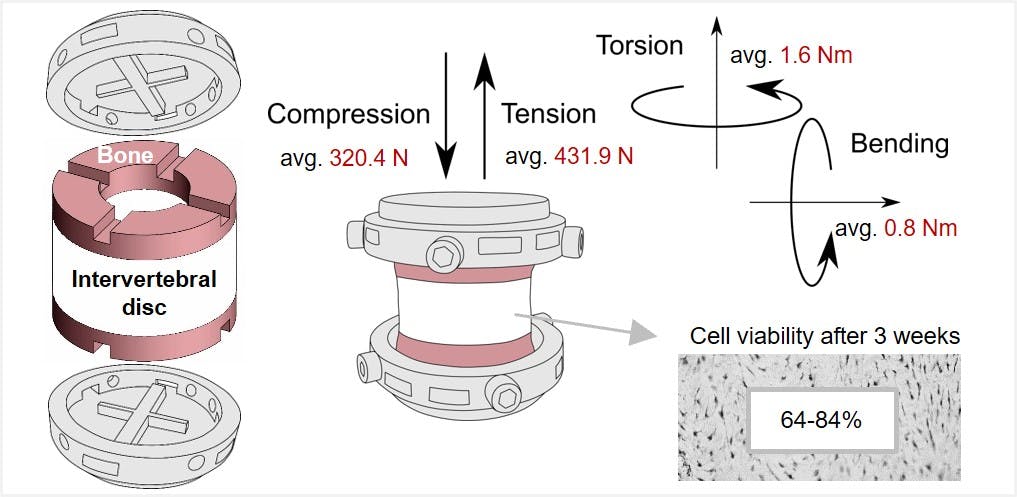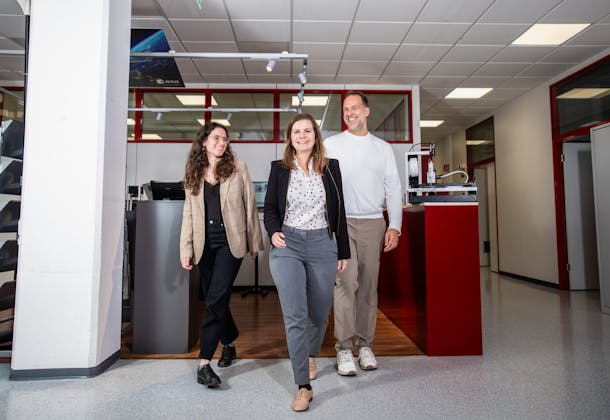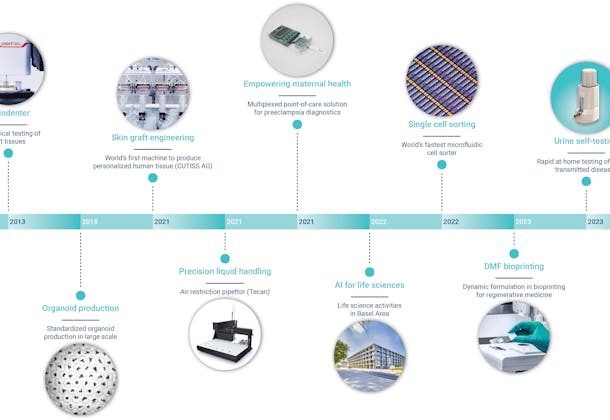The bioreactor was developed to address an unmet clinical need of how best to treat a leading health problem and cause of reduced work performance, low back pain. Low back pain is most associated with intervertebral disc degeneration. This condition is not life-threatening but a social burden with a high socioeconomic impact.
Why do we need mechanical stimulations?
CSEM’s Tools for Life Sciences team is highly skilled in developing solutions for in-vitro automated microphysiological systems (MPS) for cells, complex 3D models, organoids, and tissues mimicking the physiological conditions of organs. Alongside its partners, CSEM helped ensure the bioreactor’s design perfectly mimics the various motions human spines are subjected to daily, such as flexion, extension, bending, and rotation under closed, sterile, in-vitro conditions. It is critical to reproduce these mechanical stimulations within in vitro systems so researchers can yield identical results, ensuring the reliability of new drugs or therapies to treat musculoskeletal diseases like low back pain.
